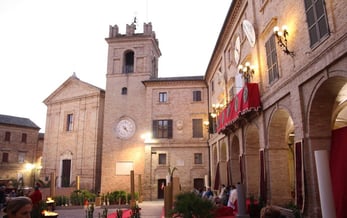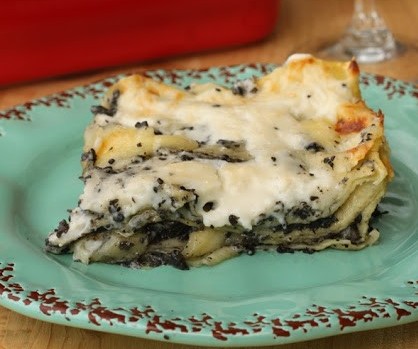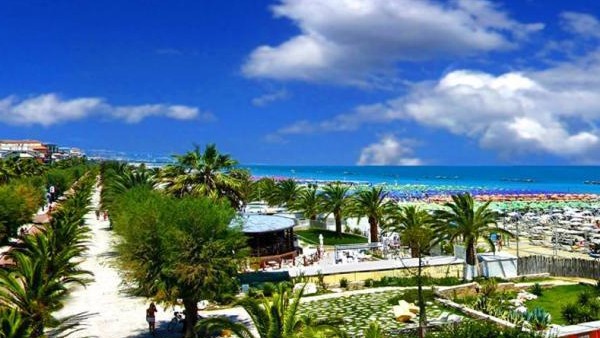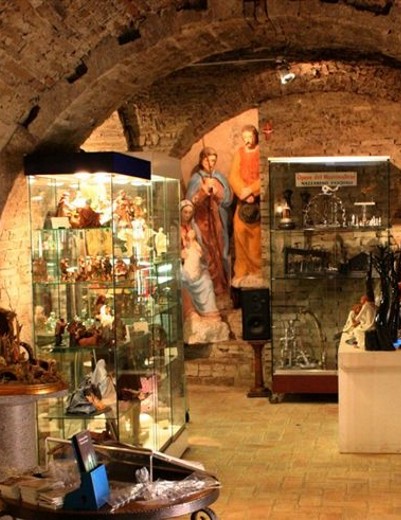Morrovalle stands on a hill at few kilometres from the sea. It is located in the province of Macerata and is known as the town of Nativity scenes; within the village there are about 500 examples of every shape, size and material! It also became famous for a unique Eucharist miracle for which it has been known as the 'Eucharistic town'.
The old town
Morro valle is still surrounded by the medieval walls with their two main gates: Porta Alvaro or Maris, so called in memory of an Aragon commander who died there during a battle and Porta di San Bernardino or delle Fonti. The heart of the town is the central square Vittorio Emanuele II rich in monuments and historical buildings. It is home to the Town Hall with its XIV century Civic tower, whose bell weighs about thirteen tons. On a side of the Town Hall there is still the crest of Cardinal Giovanni Minio who died in 1313. Another building of great historical interest is Palazzo Lazzarini, in Gothic style and whose main façade presents a precious stone portal decorated with small columns, inscriptions and coats of arms of the Middle Ages. Its interior is characterized by large rooms which are home to the Civic Art Gallery Museum, the Town library and other spaces used for conferences and exhibitions. The museum exhibits several religious works, including the Madonna del Soccorso (early XVI cent.) and a Sacra Conversazione (Sacred Conversation) by one of the artists who went by the name of Pomarancio. One of the rooms is entirely dedicated to the materials of the Monte di Pietà (pawnshop) which was founded in Morrovalle for charitable causes in 1475. The Town library has more than 3,000 volumes of fiction, literature and an extensive section of art history. Not too far, you'll find the Palazzo Vicoli Nada, the old Convent of the Augustinian Fathers built in the XVII cent. where the crepuscular writer Lalla Nada, friend of Gabriele D'Annunzio, once lived. Today it houses the International Museum of the Nativity scenes set in six rooms of about 230 square metres, a unique collection in the area ...just think that in Italy there are only 3 or 4 of its type! Of particular interest a XVIII cent. French nativity in copper, a Palestinian nativity scene made of mother-of-pearl, some in ebony from Kenya, a nativity scene carved on a cameo of coral from Torre del Greco and many other unique pieces! Finally, the Palazzo Podestà in the centre of the town and Palazzo Roberti, an unfinished building from the XVI cent. Don't miss a visit at the XVII cent. Church of St. Agostino, which contains the "Madonna delle Grazie", the Church of St. Bartolomeo Apostolo in Neoclassical style, the Church of St. Giuseppe, the Sanctuary of Madonna dell'Acqua Santa (Our Lady of Holy Water; 1612), that houses the remains of Pier Francesco Greci and the Franciscan Monastery, also called the Minori Osservanti or Zoccolanti. Outside the ancient walls of the village, at the foot of the gate of Porta di San Bernardino, there are the ancient water sources named Fonte Maxima. Again, just outside the village, towards Macerata, you come to the hamlet of Santa Lucia and the village of Trodica, where there is the Convent of the Passionist Fathers, whose origins date back to 1656.
valle is still surrounded by the medieval walls with their two main gates: Porta Alvaro or Maris, so called in memory of an Aragon commander who died there during a battle and Porta di San Bernardino or delle Fonti. The heart of the town is the central square Vittorio Emanuele II rich in monuments and historical buildings. It is home to the Town Hall with its XIV century Civic tower, whose bell weighs about thirteen tons. On a side of the Town Hall there is still the crest of Cardinal Giovanni Minio who died in 1313. Another building of great historical interest is Palazzo Lazzarini, in Gothic style and whose main façade presents a precious stone portal decorated with small columns, inscriptions and coats of arms of the Middle Ages. Its interior is characterized by large rooms which are home to the Civic Art Gallery Museum, the Town library and other spaces used for conferences and exhibitions. The museum exhibits several religious works, including the Madonna del Soccorso (early XVI cent.) and a Sacra Conversazione (Sacred Conversation) by one of the artists who went by the name of Pomarancio. One of the rooms is entirely dedicated to the materials of the Monte di Pietà (pawnshop) which was founded in Morrovalle for charitable causes in 1475. The Town library has more than 3,000 volumes of fiction, literature and an extensive section of art history. Not too far, you'll find the Palazzo Vicoli Nada, the old Convent of the Augustinian Fathers built in the XVII cent. where the crepuscular writer Lalla Nada, friend of Gabriele D'Annunzio, once lived. Today it houses the International Museum of the Nativity scenes set in six rooms of about 230 square metres, a unique collection in the area ...just think that in Italy there are only 3 or 4 of its type! Of particular interest a XVIII cent. French nativity in copper, a Palestinian nativity scene made of mother-of-pearl, some in ebony from Kenya, a nativity scene carved on a cameo of coral from Torre del Greco and many other unique pieces! Finally, the Palazzo Podestà in the centre of the town and Palazzo Roberti, an unfinished building from the XVI cent. Don't miss a visit at the XVII cent. Church of St. Agostino, which contains the "Madonna delle Grazie", the Church of St. Bartolomeo Apostolo in Neoclassical style, the Church of St. Giuseppe, the Sanctuary of Madonna dell'Acqua Santa (Our Lady of Holy Water; 1612), that houses the remains of Pier Francesco Greci and the Franciscan Monastery, also called the Minori Osservanti or Zoccolanti. Outside the ancient walls of the village, at the foot of the gate of Porta di San Bernardino, there are the ancient water sources named Fonte Maxima. Again, just outside the village, towards Macerata, you come to the hamlet of Santa Lucia and the village of Trodica, where there is the Convent of the Passionist Fathers, whose origins date back to 1656.
Morrovalle's strength...the local cuisine!
Eating well is the watchword here! :) The most typical dish is represented by the Vincisgrassi, similar to the traditional lasagna but enriched with truffle. The first courses are characterized essentially by homemade pasta served with various sauces: tagliatelle, pappardelle, fettuccine, chitarrine, quadrucci, straccetti, pinciarelli and tajulì pilusi, made with the addition of corn flour. Salami is also very popular, such as the Ciauscolo, a tender salami similar to a big sausage, ideal to spread on fresh bread or serve with the typical rosette buns; Lo Salato, a rustic raw ham; Coppa di testa and Mazzafegato (fresh or cured sausage based on pork meat and liver). Olive all'ascolana are also a must of Macerata cooking traditions; they are big olives stuffed with chopped meat, eggs, cheese, parmesan cheese and several spices. Even the Torta salata (savoury tart) and the Parmigiana di gobbi (a type of vegetarian lasagna) are worth a try. The area is also rich in vineyards and you could enjoy different wines, including Verdicchio dei Castelli di Jesi, Rosso Piceno, Verdicchio di Matelica, Falerio dei Colli Ascolani and many more! Last but not least, the Vino cotto, a well-known local mulled wine; every year in Loro Piceno there's a festival linked to this wine, which is usually served as an after-dinner drink.

About its surroundings...
This town is an excellent starting point to discover both the coast and the inland areas of Le Marche region; here are some recommended destinations: San Benedetto del Tronto, Fermo, Recanati, Macerata, Loreto... all of them worth a visit!
The city of Fermo rises on a hill facing the sea and in its background stands the mountain range of the Sibillini with many plant and animal species. The Sibillini Mountains are easily accessible and offer the possibility to organise excursions and many activities related to nature. Loreto is famous worldwide for its Sanctuary which houses the Holy House of Nazareth, a year-round destination of pilgrimages. San Benedetto del Tronto and the entire Adriatic coast also offer numerous attractions: the sea, pubs, clubs, restaurants and a lot of fun.












